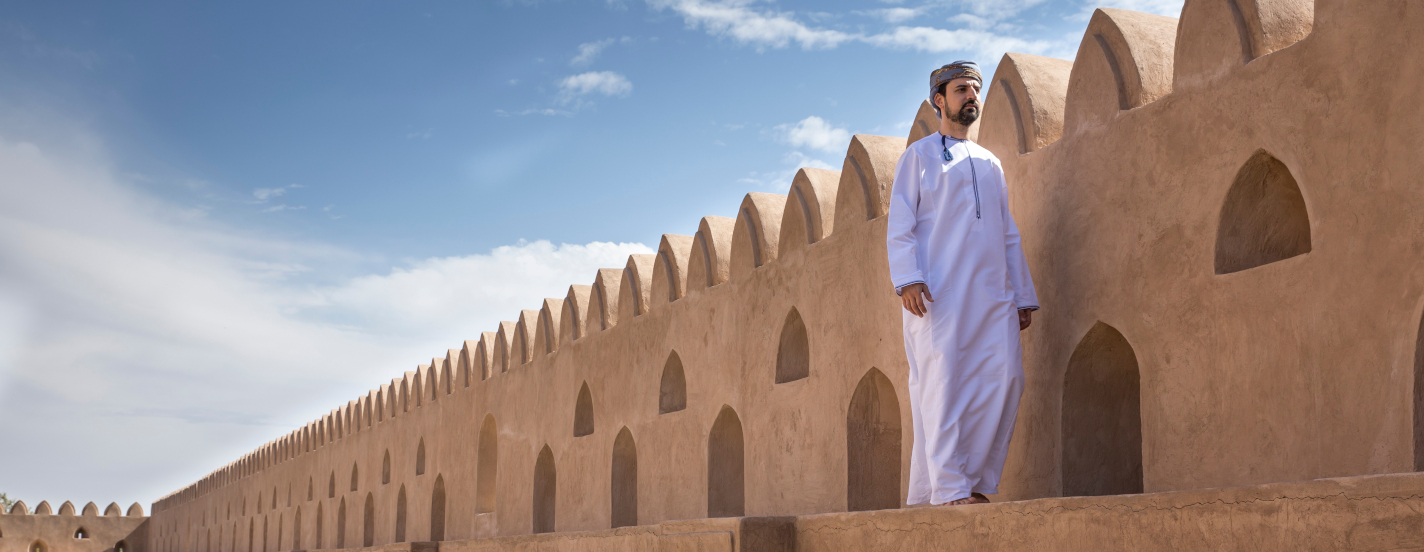The attire you wear is an extremely visible and obvious indication of ethnic identity in Omani culture. Although it contains aspects influenced by the other Arab countries, the traditional dresses have distinct Omani characteristics. Join us in this session as we visit a retail shop selling traditional Omani outfits for men, usually worn during celebrations, weddings and festivities.
Our friendly local host, dressed in the typical local outfit of a long tunic and a head cap, is an expert in Omani culture and is excited to show you around a popular retail store in his hometown of Sur, roughly 150km from the capital city of Muscat. The conservative nature of the Arab society as well as an extremely hot climate influenced the daily garb with both men and women preferring long, loose tunics made of cotton or other light materials, that covered them from the neck all the way to their feet and had long-sleeves. Their religion requires their hair to be covered, so head caps for men and scarves or hijabs for women, became commonplace.
As we enter the shop, the host tells us that the long tunic for men, is called a ‘dishdasha’ and is usually white for any formal occasions, while other solid colours can be used as casualwear. Irrespective of formal or casual situation, the dishdasha is always accompanied by some form of head cap - a ‘kumma’ which can be described as a banded skull cap, or a ‘massar’, a turban that is tied in a particular manner around the kumma. Even in informal settings, if you turn up wearing a dishdasha minus the head cap, you are bound to get more than a few stares.
Another essential element of the traditional Omani attire for men, is the ‘khanjar’ or the L-shaped dagger, adorned with a belt around the waist. Khanjars usually have intricate designs on their caskets, and sometimes around the head as well. These sharp knives were the only protection Omani men carried with them when they used to go hunting during their nomadic days. Today, it remains a symbol of masculinity and is always a part of the wedding dress for the groom.
If you want to practise Arabic, then don’t feel shy to ask all your questions to the session host in Arabic, as he will be very happy to answer them for you in his native tongue. Children will definitely love this experience of learning about the Arabic cultural dress from Oman.


 Charly Jacob
Charly Jacob
Write a public review